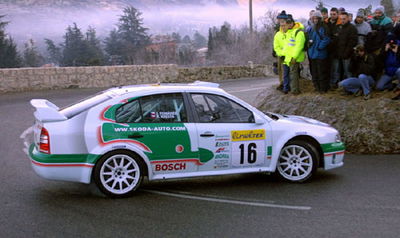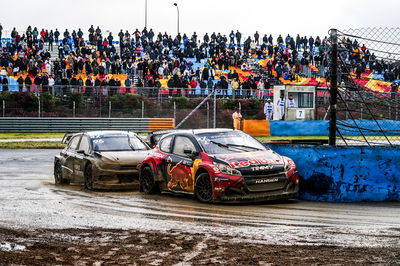Q&A: Terry Kaby.
555 Subaru World Rally Team member Terry Kaby talks about his role at World Rally events; the Monte Carlo rally and a lot more:
Q:
What's your job with the team?
555 Subaru World Rally Team member Terry Kaby talks about his role at World Rally events; the Monte Carlo rally and a lot more:
Q:
What's your job with the team?
Terry Kaby:
I'm here in Monte Carlo as one half of Petter Solberg's ice crew (also known as ouvreurs in Monte Carlo). I work together with co-driver Bruno Berglund, to provide last minute information and fine detail about stage conditions just before Petter and Phil drive through them. We both know the character of these stages very well - Bruno is a very experienced driver and I first worked on the Monte Carlo rally in 1969.
Q:
How does an ice crew differ from a gravel crew?
TK:
It's really the same thing, The name just depends on the surface we're checking. In the past we were always referred to as ice-crews as this extra information was only really used on the frozen rallies where we'd look for black ice and water that might freeze. But nowadays drivers need more detail on all events, so the name gravel crew started appearing and this is what we are called most of the time.
Q:
What does the job involve?
TK:
We are allocated a time slot by the organisers and drive through the stages before the competitors using a copy of their pace notes. Bruno will read the notes to me just as Phil would to Petter, but instead of just following them I will be looking at the road calling additional notes or changing them where appropriate. For leg one in Monte Carlo things like the amount of water, ice or snow on the road may have changed significantly since the recce and our information helps engineers and tyre personnel to determine the best car set-up. We also talk with the drivers just before they leave service and brief them on the changes to their notes.
Q:
What car do you use to make the notes in?
TK:
It's a group N spec Subaru Impreza - the same one that Petter and Phil use for the recce.
Q :
At what speed do you drive the stages?
TK:
At normal road speeds. Bruno has to make accurate notes as well as read them, so there's no advantage in driving quickly - we'd only have to keep stopping to write things down. Also there's often other traffic on the stages when we're on them, so we have to be prepared for that.
Q:
How can you predict where ice will form on the stages?
TK:
I suppose it's a mixture of experience, local knowledge and thermometers. In the mountains, some roads are particularly exposed and are susceptible to black ice. Over time you get to know which ones these are. But apart form that, we take a ground and air temperature at the start of each stage, and Petter will do the same before he starts - we can make some estimates based on the difference between the two.
Q:
Do you ever compare notes with the ice-crews from other teams?
TK:
No. There's a good deal of co-operation between Tommi Makinen's crew and ourselves but good notes give us a competitive advantage, so we wouldn't want to share them with other teams. If there were a safety issue though, if spectators had put snow on a dry hairpin, and we were the last car through for instance, then that would be different.











